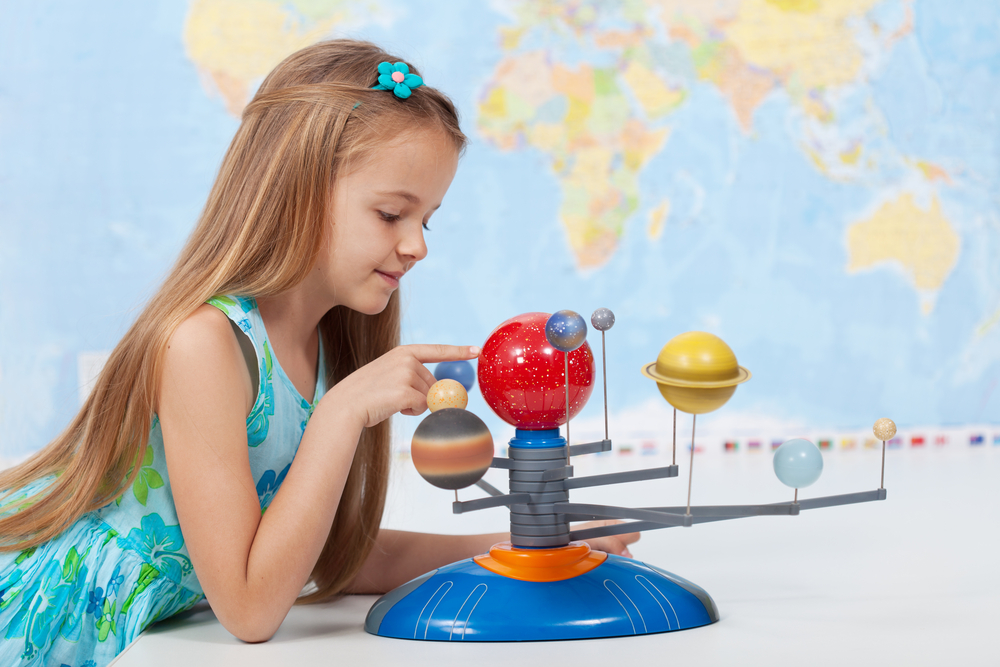Animal Classification Worksheets for Ages 5-8
10 filtered results
-
From - To
Discover engaging Animal Classification Worksheets designed specifically for children aged 5-8! These educational resources from Kids Academy simplify the fascinating world of animal groups, helping young learners identify and categorize different species. With vibrant illustrations and fun activities, kids will explore mammals, birds, reptiles, amphibians, and fish while enhancing their reading and critical thinking skills. Perfect for classroom use or homeschooling, our printable worksheets make learning about animals an exciting adventure. Foster a lifelong love for science and nature in your child today with these captivating Animal Classification Worksheets!
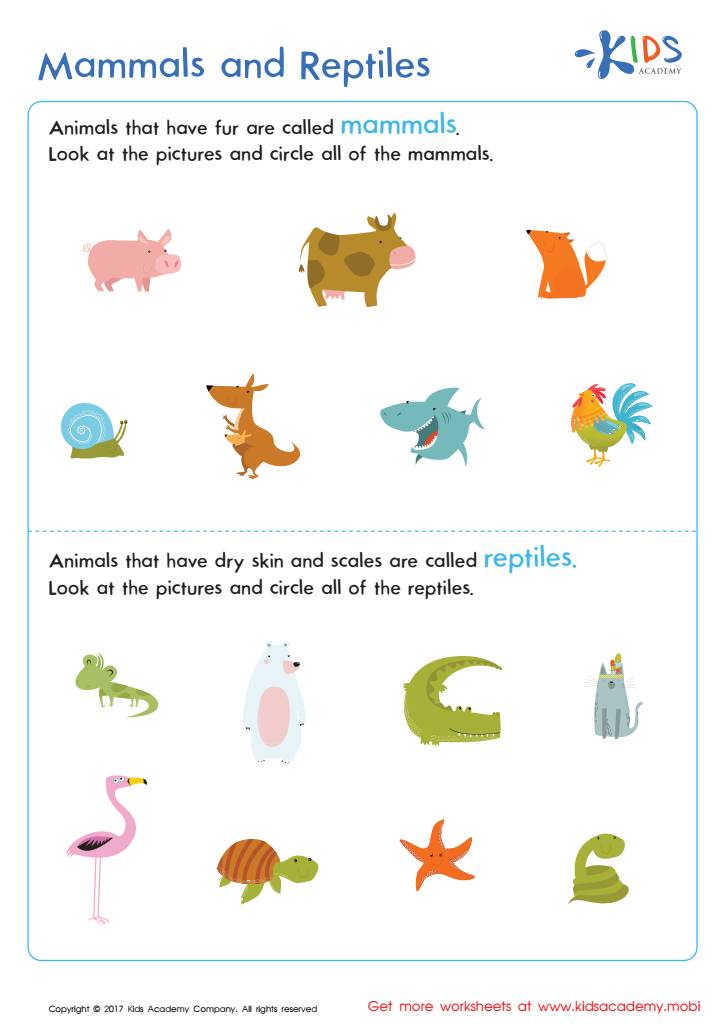

Mammals and Reptiles Worksheet
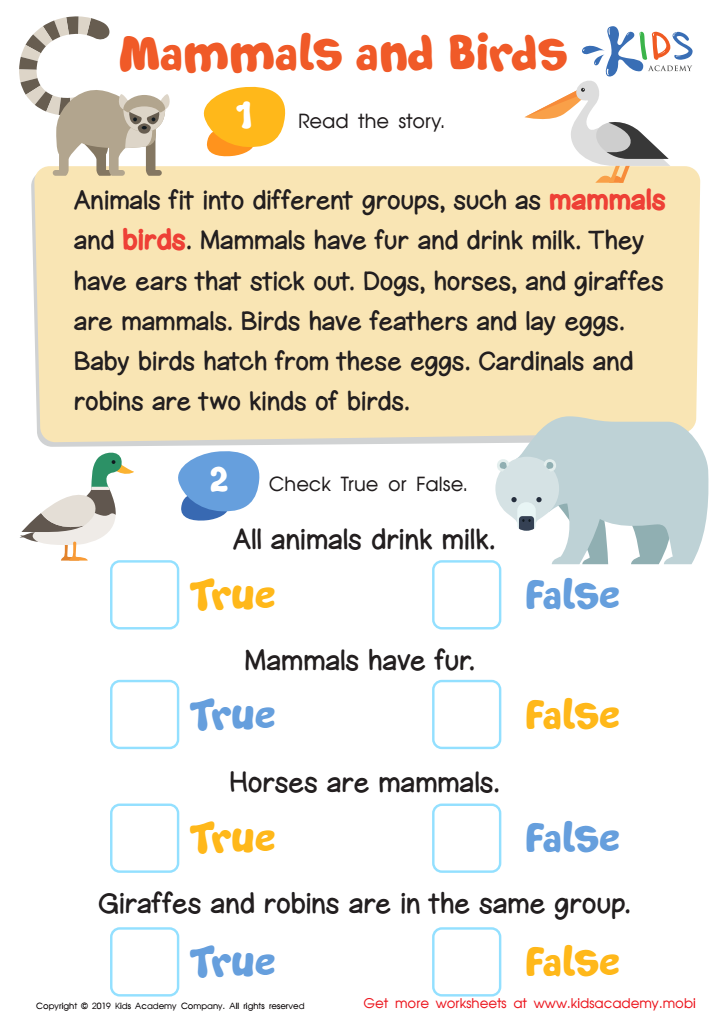

Mammals and Birds Worksheet


Am I a Mammal or Bird? Worksheet
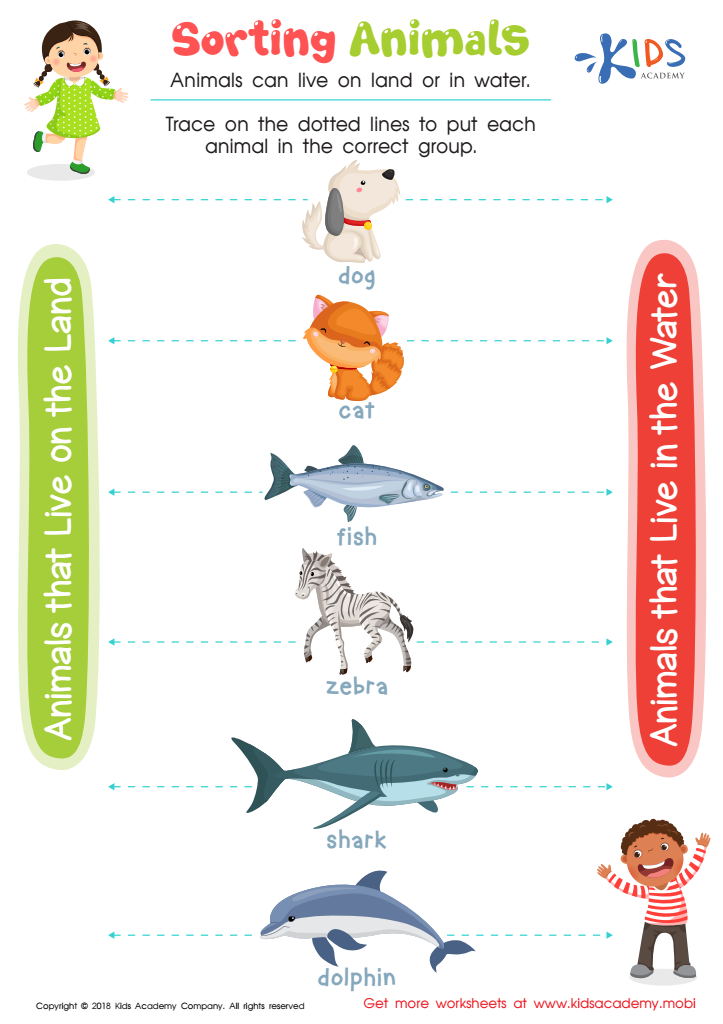

Sorting Animals Worksheet
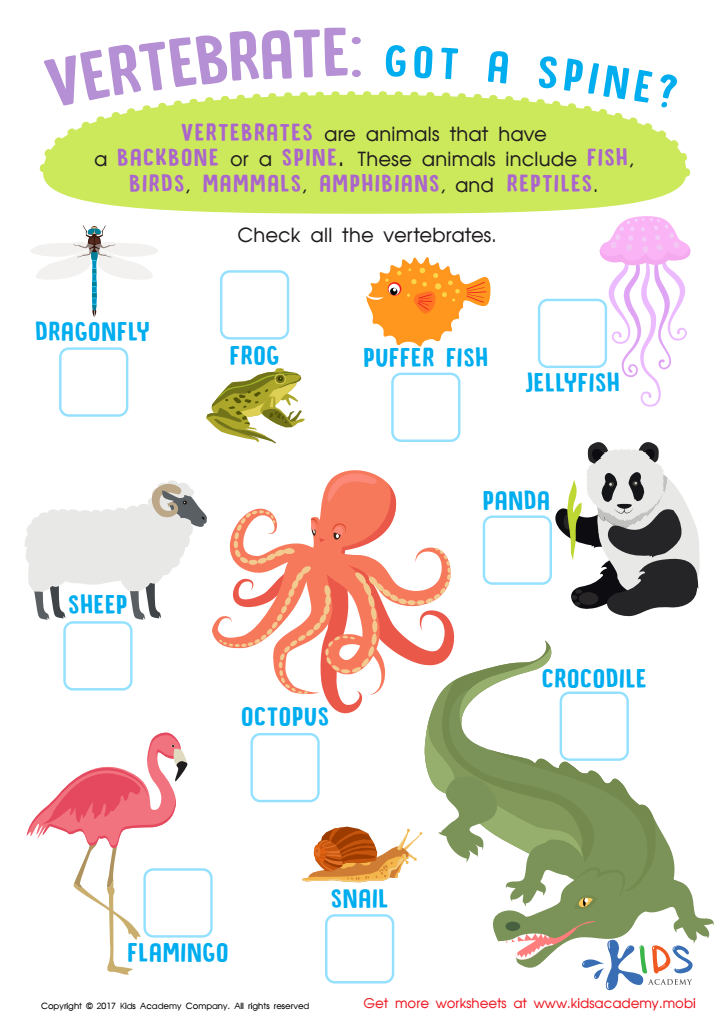

Vertebrates Animals Worksheet for 3rd Grade
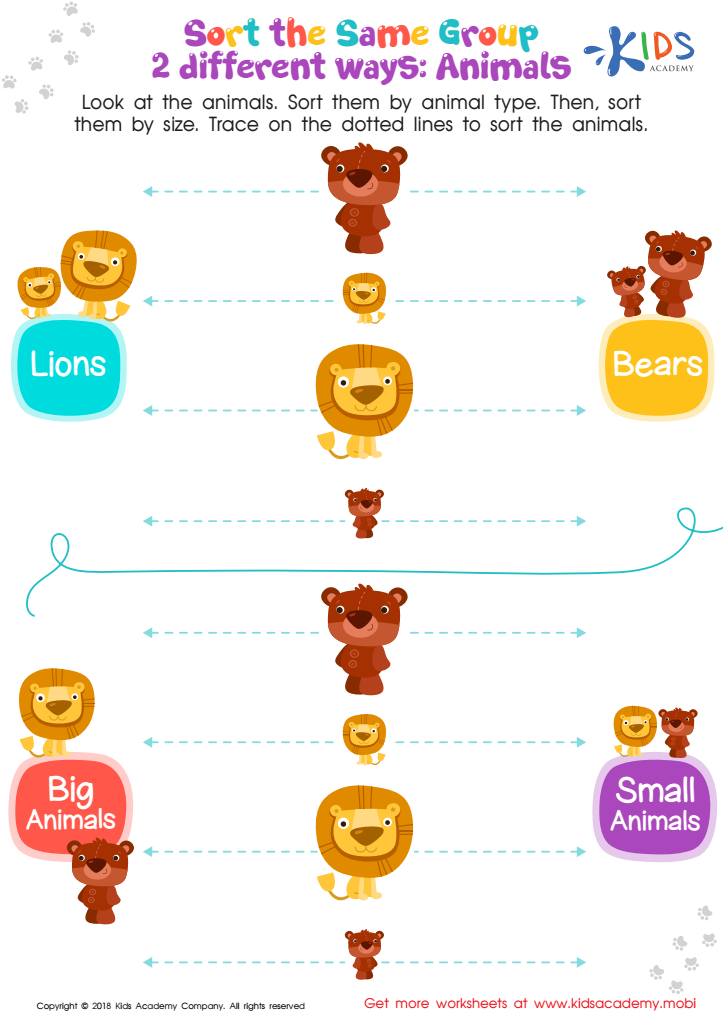

Sort the Same Group 2 Different Ways: Animals Worksheet
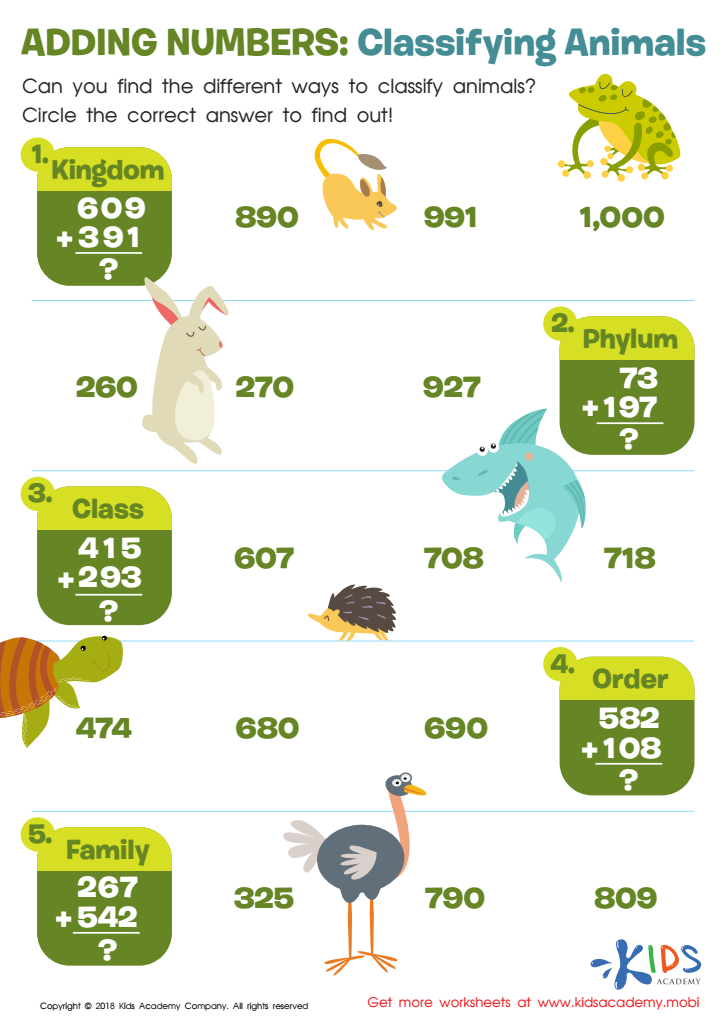

Adding Numbers: Classifying Animals Worksheet


Fur or Feathers? Worksheet
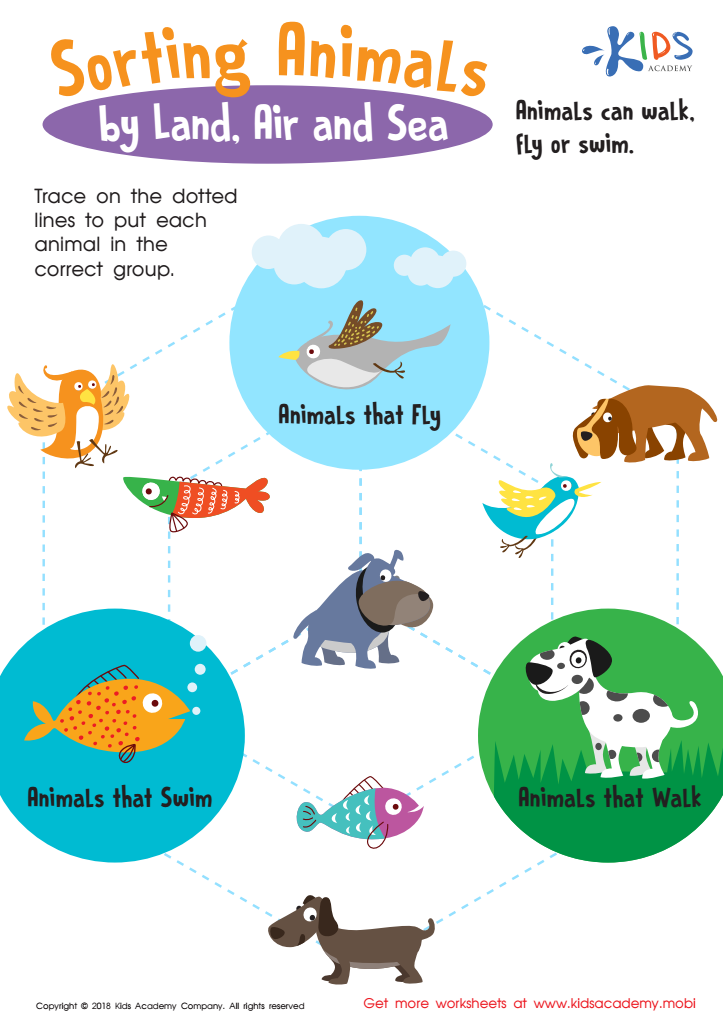

Sorting Animals by Land, Air and Sea Worksheet
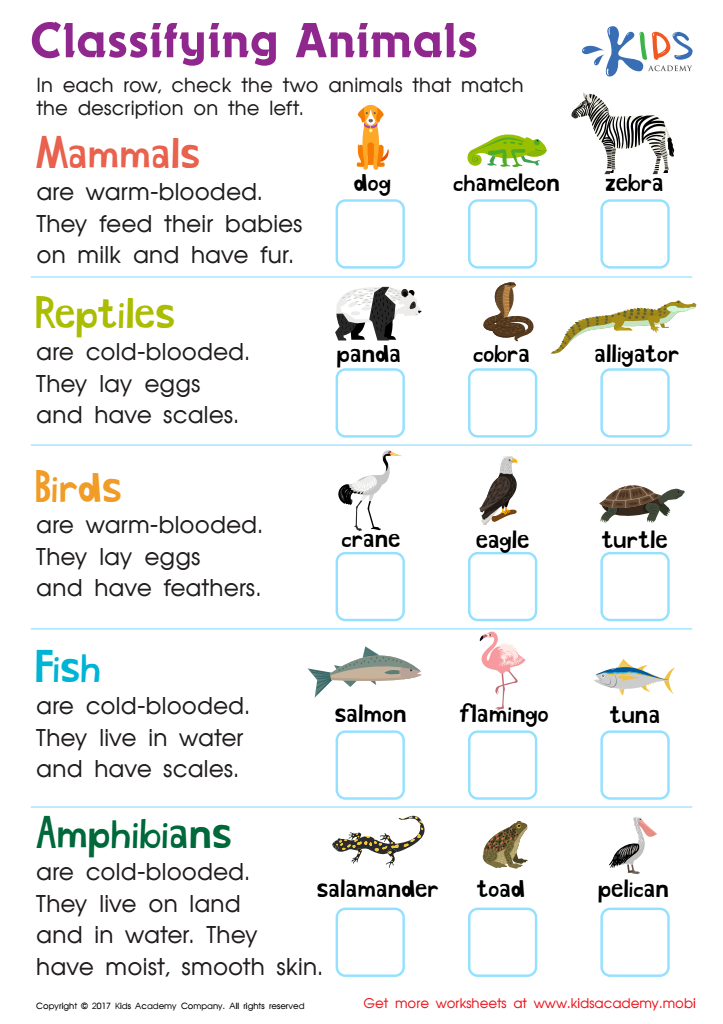

Classifying Animals Worksheet
Introducing the concept of animal classification to children aged 5-8 can significantly benefit their overall development in several ways. Firstly, learning about animal classification nurtures curiosity and a love for nature. It provides young children with the opportunity to explore the biological world, fostering a deep appreciation for biodiversity and environmental stewardship.
Secondly, animal classification helps build critical thinking and problem-solving skills. Children learn to observe differences and similarities between creatures, understand categories, and make connections, which enhances their cognitive abilities. Understanding groups like mammals, birds, and reptiles, for instance, helps children grasp fundamental scientific principles in a concrete manner.
Additionally, this topic enriches vocabulary and language development. Kids become familiar with specific terms and concepts, bolstering their communication skills. Discussing traits like "feathers," "scaly skin," or "cold-blooded" adds texture to their descriptive ability and comprehension.
Socially, studying animal groupings can stimulate empathetic behavior as kids learn how various animals live, what they eat, and how they survive. This awareness can promote social-emotional learning by encouraging respect and care for living creatures.
Finally, such early exposure lays the groundwork for more complex scientific learning in later years, building a strong foundation for STEM education. Overall, paying attention to animal classification at this early stage works effectively to nurture well-rounded, curious, and knowledgeable individuals.
 Assign to My Students
Assign to My Students






